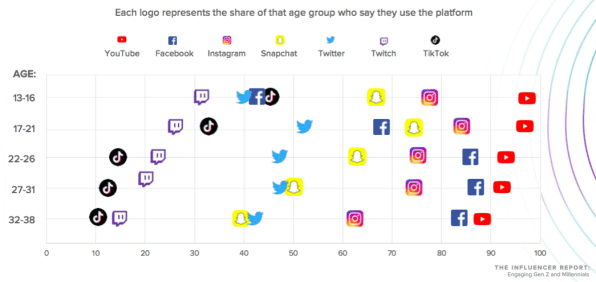Data bias in growth marketing is a well-documented and researched problem among data and machine learning scientists. We’ve seen it across the various applications of machine learning but the loudest examples often come from image recognition, recommendation systems, or predictive financial models.
In November 2019, the world woke up to Entrepreneur David Heinemeier Hansson’s complaint against Apple Card for having a clear bias in their algorithm that led to assigning a lower spending power to his wife who has similar or better credentials and credit history. A few tweets revealing Apple’s algorithm bias that led to opening an investigation against Apple’s partner, Goldman Sachs by the New York Court.
What is Data Bias?
Data bias happens when the available data does not include variables that properly capture the phenomenon we want to predict.
The algorithm’s performance is a byproduct of the datasets used to train them. If a model is trained to predict future buyers, the data must be representative of those future buyers. Unfortunately, that’s easier said than done. Since the data sets used for algorithms are often extensive and complex, the data used will be inclusive of outliers or will consider factors that are not a true reflection of who the future buyers are.
It’s important to know that all data is to some degree biased. When you are the one implementing AI and Machine Learning strategies, you need to recognize your data biases early before it becomes detrimental to your efforts and costly to replace. Don’t let data bias lead you down the wrong path and jeopardize your work.
How Data Bias Affects Growth?
Data bias in growth marketing manifests itself in various ways that could easily hinder your product’s growth when algorithms start making the wrong predictions about your users.
Here are the 4 most common data and algorithm bias we encounter across growth teams and tips on how to avoid them:
1. Datasets that include negative consumer behavior
As marketers, we often leverage predictive models to optimize our audience targets. The most common example is using Facebook’s lookalike tool where Facebook creates the lookalike audience based on either user actions on your site or manual upload of your customer list. A common mistake for biases happens when marketers choose to upload their entire customer list to create lookalike audiences. As a part of retention, we know not to place each and every customer on the same plane. Loyal and repeat customers with high LTVs are more profitable for the business while customers with negative consumer behaviors like high churn, high promotional consumption, and low LTVs tend to be less valued. So why are you still uploading your entire list of customers?
A good way to build the strongest lookalike audience is to manually remove the data of your low-value customers, or those customers with negative consumer behaviors when you upload your customer list. Instead of looking at everyone that has purchased, create lookalike audiences from a list of customers with repeat purchases or high LTVs. This way you’re feeding the algorithm a cleaner and better data set that actually represent your best customers who will reinforce positive consumer behavior.
This also applies to the SaaS space. Don’t upload your entire customer base! Focus on the customers that stick around, gives positive NPS scores, have the highest LTV, and are getting the most value out of your product.
2. Platform bias and persona validation
Very often startups come to NoGood and say “I thought my product would attract people in their mid-20s or early 30s, but when I tested on Facebook it turned out my target age range was between 35 and 55.” And the first thing that comes to mind – is Facebook actually the right platform to test your product on younger Millennials or Gen Z’s? Facebook is actually known to be a ghost town for Gen Z’s, and even those who are on Facebook generally have the lowest engagement and the lowest activities compared to other generations. This is why you have to consider platform bias and how it impacts your product at the end.
You are not going to use Snapchat or TikTok to target Moms and Pops, so why are you using Facebook to target the younger demographics? People often think Facebook is the exception to the rule when it comes to platform bias just based on the fact that there are two billion people on Facebook. However, you need to consider who is actually active on Facebook and what they are using the platform for. If 90% of your audience is coming through Facebook, it’s time for you to start thinking about a different audience mix and new channels.
To overcome platform bias, you should diversify the platforms in your go-to-market strategy. Serve your ads between Facebook, Instagram, and Google – this will provide a good mix of targeting which will allow you to have data that represents what scale would look like. In addition, search data is always the cleanest form of data when you’re trying to define your target personas. The search audience is people who are raising their hands and actively looking for your specific product, so look at your audience data from Search and Organic to spot if platform biases are affecting your marketing decisions.
Remember – this also applies to devices! If you are mostly running ads on Social Media, you should expect higher mobile usage since the majority of social media is consumed on the phone.
3. Confirmation bias in marketing
When you launch a new product, initial marketing efforts are based on personas you assume would be your ideal consumers. Preliminary results are often used to justify the assumptions and hypotheses you’ve made about your potential consumers. Before you know it, all your content and creatives are created to target these assumed personas as well. In data, this is called confirmation bias.
Confirmation bias in marketing happens when we favor information and take actions that support ideas with little to no predictive value. In order to avoid this bias as marketers, you need to question your idea of the ideal customers every so often. You can use Audience Insights from Facebook and Audience Interests in Google to learn more about your site visitors and find other common denominators that can lead you to new and promising customer segments. Set budget aside to test new audience segments and new ideas.
Another common cause of confirmation bias is when marketers try to replicate attributes or exhaust campaigns that over-performed in the past. It’s difficult to collect all the data and understand all the factors that lead to a successful campaign, so don’t retrace the steps of your old campaign or put more budget in when you are starting to see diminishing returns. You should be spending your time and money on designing new creatives and targeting new customer segments based on the new customers you have acquired.
4. Predictive Lead Scoring
Here is an additional tip for SaaS businesses to keep in mind about data biases. Sales teams often hunt for the biggest and easiest leads to close, since they are incentivized by the number of leads closed or sales amount won. But in their pursuit, they often miss opportunities to target leads who can become long-term customers and reduce churn. Sales teams need to look at your current customers and build a lead scoring model based on more than just revenue opportunities. Score leads based on whether or not they will get the most value out of the product or service, and if they will give you the highest NPS score and longest commitment. Getting the lead over the finish line isn’t enough anymore! In order for a Saas business to grow, you need to ensure that it was the new accounts that will improve the overall health of your business and your bottom line.
Don’t be a victim of the algorithm.
AI clearly comes with unprecedented and undeniable efficiency and automation benefits, but at an early stage, it requires a good amount of human attention and consciousness to avoid the negative impact it could come with.
AI is first and foremost artificial. It’s value starts and ends with the input of both human observation and critique. Bias is the biggest of these issues if AI is not managed properly and the key for any marketing team to mitigate the negative impact of data bias is to constantly maintain human involvement. Algorithms are unable to imagine a future that is different from the past. Be mindful of where your data is coming from and if there is misrepresentation in your datasets.
The output of an algorithm or a model is not the end-all-be-all, and it should not serve as the foundation on which you make key decisions in your growth.
Want more?
Watch our short video on data bias in growth marketing.
This article was meant to lay out how data bias in growth marketing can affect our growth results, but there is more to understand through tried and true practice. So if you are a small to medium-sized business generating $3M+ in annual revenue, looking for an agency to take the hard work of data manipulation off your plate – feel free to reach out to our team for a consultation.









This is good content. I wasn’t aware that bias could have such impact.
This part sums it up for me “Algorithms are unable to imagine a future that is different from the past. Be mindful of where your data is coming from and if there is misrepresentation in your datasets”